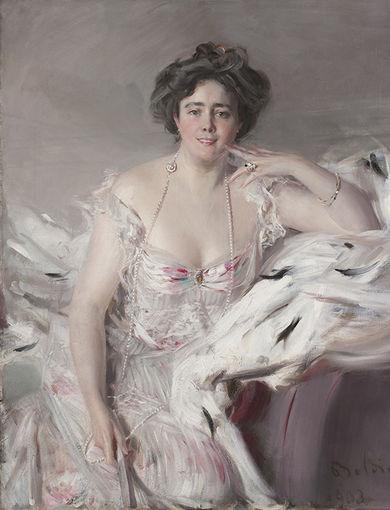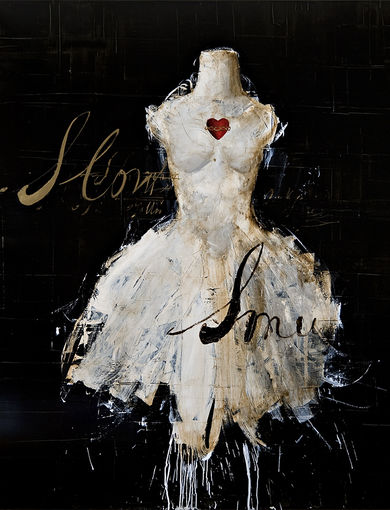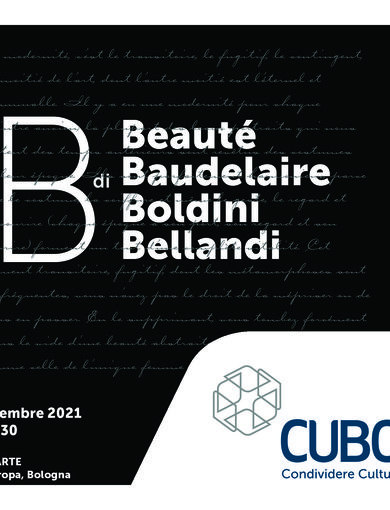B for Beauté
Baudelaire/Boldini/Bellandi
Modernity and beauty are the themes of the new exhibition of the Unipol Group’s artistic heritage. Thanks to the loan of a work by Giovanni Boldini (courtesy Bottegantica, Milan) and the works of Luca Bellandi, integrated with his most recent productions, the 200th anniversary of the birth of the poet of modernity, Charles Baudelaire, is celebrated.
Rereading Le Peintre de la vie moderne 200 years on from the birth of its author, Charles Baudelaire, it is striking just how modern and contemporary the ideas of the French poet have remained. Published in 1863, the essay enabled Baudelaire to express his opinion on the artwork of his time. The author mainly focuses on the concepts of modernity and beauty, in his opinion the key elements to be applied and sought in the creation of art, and painting in particular. In fact, in Baudelaire’s opinion, the contingent, a mark of the time, is the element that can make a work of modern art worthy of becoming antique, therefore legitimising its universal dimension: “Modernity is the transitory, the fleeting, the contingent, half of art, the other half of which is the eternal and the unchangeable”.
This notion of a model of beauty closely associated with modernity inspired the dialogue between Giovanni Boldini and his Portrait of Lady Nanne Schrader and a group of works by Livorno artist Luca Bellandi presented at the exhibition.
“In the poetry of Baudelaire, just like in that of Boldini and Bellandi, the clothes are no longer an accessory but the element that defines she who wears them; they become part of her, melding with her personality, contributing to making the woman a model of beauty, defining her from both a contingent and universal point of view." […] “The clothes remind us that beauty is transitory and always carries with it the elements of its caducity. They are symbolic of an aestheticism that is conscious of the fleeting nature of beauty and the close relationship that it has with death."
(From the catalogue text by Alice Ensabella)





